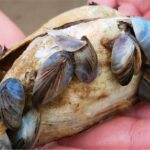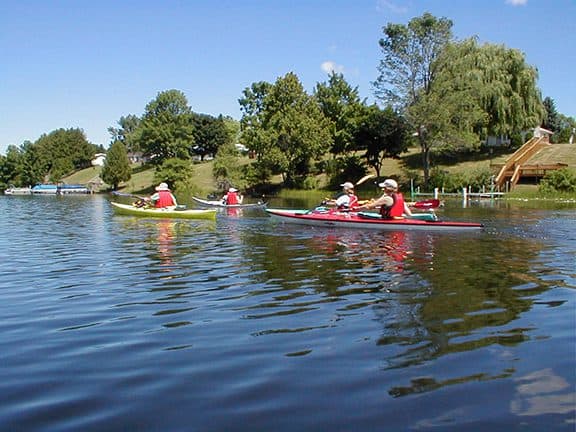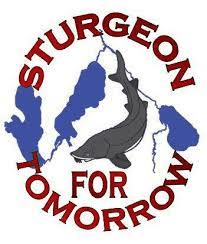

Black Lake is one of the largest lakes in the Tip of the Mitt Watershed Council service area. In terms of surface area (>10,000 acres), Black Lake is the 9th largest inland lake in the State of Michigan. It is located in the northeast corner of the Lower Peninsula, in both Cheboygan and Presque Isle Counties. Although not pronounced, there are two distinguishable basins in Black Lake; the northwest end characterized by broad shallow areas that deepen gradually while the southeast end is much deeper, wider and has a more pronounced drop-off, particularly on the western side. The largest inlet to Black Lake is the Upper Black River, which flows in on the west side just north of Five-mile Point. The next largest tributary is the Rainy River, which enters in the southeast corner of the lake. Several smaller streams, including Stony, Stewart, and Fisher Creeks in the south, Mud Creek in the west and Cain’s Creek to the north, also flow into Black Lake. These rivers and streams deliver great quantities of dark tannin-stained waters that give the lake its name. Tannins are natural, coming from plants, and do not pose a threat to water quality. The only outlet from the lake is the Lower Black River, which empties out of the northwestern corner of the lake.

Recreational access to Black Lake is available to the public at MDNR boat launches located at Onaway State Park on the southern shore and Black Lake Forest Recreation Area in the northeast corner of the lake. Black Lake is renowned for its thriving lake sturgeon fishery. The Black Lake Association has invested considerable time and resources to improve the lake’s walleye fishery. One factor affecting the fishery and lake ecosystem in general is the presence of invasive zebra mussels. These invasive mussels disrupt the natural nutrient cycle and food chain dynamics, which results in a loss of primary productivity (planktonic algae) and consequently, leads to reductions in top predator populations, such as walleye and trout.
Black Lake is monitored every three years through the Watershed Council’s Comprehensive Water Quality Monitoring (CWQM) Program for dissolved oxygen, specific conductivity, pH, nitrate-nitrogen, total nitrogen, total phosphorus, and chloride levels. Water transparency, chlorophyll-a, and water temperature are also monitored in Black Lake each summer by volunteers as part of the Watershed Council’s Volunteer Lake Monitoring (VLM) Program.
Black Lake AssociationThe Black Lake Association was founded in 1928 by a group of volunteers focused on maintaining the quality of the lake and surrounding watershed, providing recreational opportunities and to communicate information of interest to its members.
Address: PO Box 302, Onaway, Michigan, 49765 Black Lake Preservation SocietyOur sole MISSION is to protect and preserve the ecology of Black Lake, its tributaries and watershed through advocacy and program development; and to operate in a transparent, professional and neighborly manner.
Address: 2014 N Saginaw Rd Box 260, Midland, Michigan, 48640
The purposes of Sturgeon For Tomorrow, Inc. (SFT) are to assist fisheries managers in the rehabilitation of the Lake Sturgeon, to advance education, to further other charitable, educational and scientific objectives, to engage in and facilitate scientific research furtherance of such purposes, and SFT, Inc. shall be empowered to engage in such other and further means necessary and proper to accomplish the foregoing objects and purposes.